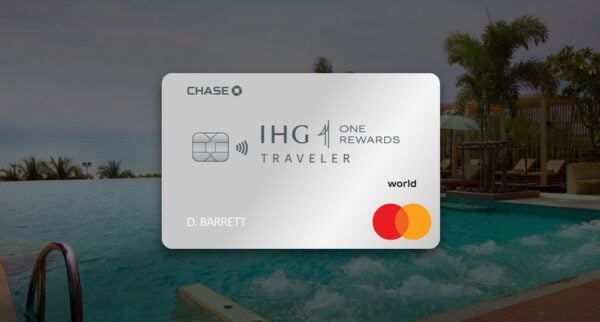Searching for the best credit cards will likely put you on a path leading to increasingly complex strategies hyper-focused on squeezing every last point or mile out of your purchases. Some consumers take it further and look for the best redemptions available. There is nothing wrong with that, and it can be very lucrative.
However, it can also take a lot of time and effort. While I have done it to some extent, I often prefer a more straightforward strategy. That strategy relies heavily on one of my favorite credit cards: the card_name. I’ll explain why I love this card and how to use it to your advantage without complicating things.
The sign-up bonus is great
Many credit cards have sign-up bonuses to entice new potential customers. These bonuses come in many forms, with some offering points or miles and others rewarding you with cash back. You typically have to spend a certain amount in a specific timeframe to earn the bonus. Credit card issuers occasionally run special promotions, increasing the sign-up bonus amount for a time.
The card_name requires customers to spend signup_bonus_spend_amount in the first three months from account opening to earn its bonus. The current bonus, however, is a whopping signup_reward bonus points, which is a fantastic offer.
The signup_bonus_spend_amount spend threshold may sound like a lot, and it is. But while working toward a sign-up bonus, I like to put all my purchases on the relevant credit card and then pay them off. This helps me earn the bonus while avoiding excessive spending.
That said, how much are signup_reward bonus points worth? The base value is one cent per point, meaning the bonus is worth at least $600. That’s how much you earn if you claim the bonus with cash back. However, as we will explore later, Chase makes it relatively easy to increase the value of the sign-up bonus.
You earn points on your everyday purchases
Even after you successfully earn the card_name sign-up bonus, there’s no need for the card to collect dust. It earns a generous number of points on things you likely buy often, which is like getting a discount.
The best bonus it earns is on Chase Travel℠ purchases, which reward you with five points per dollar spent. This applies to travel reservations booked through the Chase Travel portal, which lets you book flights, hotels, rental cars, and other reservations in one place.
My personal favorites are the categories that earn three points per dollar. These include dining, online grocery orders, and select streaming services. I cook at home when I can, but my wife and I are busy, which inevitably means getting take-out or delivery somewhat regularly. It’s a bit pricier, but earning some points in exchange is nice.
There are numerous ways to redeem points
The card_name has several benefits, but my favorite is its flexible redemptions. It earns Chase Ultimate Rewards points, which have several redemption options. For instance, you can redeem them for cash back, use them in the Chase Travel portal, or transfer them to travel partners. Other popular redemptions include gift cards and paying yourself back for past purchases.
Redeeming points in the Chase Travel portal is a nice option because you can book all your travel reservations in one place. Even better, Ultimate Rewards points are worth 25% more when you book through the portal, meaning the current bonus offer can be worth as much as $750 when redeemed for travel through Chase Travel.
Another interesting and sometimes lucrative option is transferring points to travel partners. While points usually transfer at a 1:1 ratio, some partners occasionally have transfer bonuses. For instance, at the time of this writing, points are worth 20% more when you transfer them to British Airways. However, that is slightly less than the 25% bonus you earn through Chase Travel, so that is often the most sensible way to redeem points for travel.
➤ SEE MORE:Credit card transfer partners explained
I love the travel benefits and protections
One of the most frustrating aspects of traveling is dealing with the inevitable hiccups, such as lost luggage, delays, and cancellations. Fortunately, the card_name provides coverage in all those situations, plus additional benefits for travelers.
For instance, its trip cancellation/interruption protection reimburses up to $10,000 per covered traveler and up to $20,000 per trip. I took advantage of this benefit when one of my connecting flights was significantly delayed. It was getting late, and I was forced to take the fight the following day instead of my original departure. I’m not capable of sleeping at the airport, so I decided to book a hotel room and get some sleep. I used Chase’s trip interruption insurance, which reimbursed me for 100% of the cost.
Another nice benefit of this card is a $50 annual hotel credit. The credit is only good for Chase Travel bookings, but this credit alone can offset about half of the card’s annual fee. The Sapphire Preferred also doesn’t charge foreign transaction fees, so you can use it freely anywhere Visa is accepted.
➤ SEE MORE:Guide to credit card travel insurance
The annual fee is reasonable
You get a lot of value with the card_name, and the best part is that the annual fee is reasonable. At annual_fees, the fee is on par with the cheapest credit card annual fees, other than those with no annual fee. Considering that the annual hotel credit alone is worth $50, getting more than annual_fees in value from this card isn’t too difficult. If you earn the sign-up bonus in the first year, you get even more from the Sapphire Preferred.
However, I continue to hold onto this card year after year because it offers several benefits at a reasonable cost. The high points earnings on dining and travel purchases, the flexible redemptions, and the travel and purchase protections make it well worth the fee, at least for me.
Because it has a much lower fee than premium travel cards, it’s worth holding onto, even for the occasional traveler. And because the fee won’t burn a hole in my pocket, I’m happy to keep it for the peace of mind it provides.
Bottom line
Due to its wide-ranging perks and versatility, I never leave home without my card_name. Several credit cards undoubtedly have better earning rates, a better set of premium perks, or more lucrative sign-up bonuses. However, that often comes at the price of a higher annual fee and more complicated rewards. In addition, those that aren’t Chase cards rarely offer the flexibility of Ultimate Rewards points.
➤ SEE MORE:Guide to Chase Ultimate Rewards points
While this card is not necessarily the best choice in every situation, I believe it is among the best choices for those who want a great travel credit card that requires minimal effort. Because it has a low annual fee, I rarely think too much about whether the card is worth it. For me, that means keeping this card around year after year.


